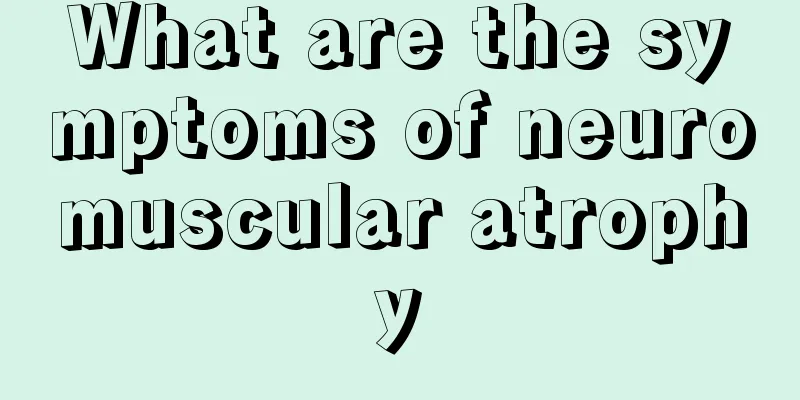The process of fat digestion and absorption

|
Many of the foods we eat on a daily basis contain fat. If the fat content in the human body is too high, it will cause great harm to health. Many patients with "three highs" have excessive fat in their bodies. Generally speaking, if we consume fat, the human digestive system will automatically begin to digest and absorb it. So, what is the process of fat digestion and absorption? The digestive process is complex in both humans and animals, but can be simply summarized into three steps. First, the fats are emulsified and suspended in liquid (usually acid in the small intestine); here they are broken down by a series of enzymes and proteins before being absorbed and distributed. Several internal organs, including the liver, gallbladder and pancreas, play important roles in this process. If you have trouble digesting fat, whether chronic or temporary, you may experience problems such as abdominal pain and difficulty having bowel movements. Digestion Basics The human body is made up mostly of water, which means that food is usually digested as a water solution. This is why the problem of fat being insoluble in water sometimes arises. The digestion of many foods begins in the mouth, where they are processed by saliva and sent to the stomach. The gastric juices in the stomach convert much of the food into something called chyme, which is semi-digested solids that have more nutrients. But this process is generally not suitable for fats, which are not affected by enzymes in saliva. Therefore, the fats are not much altered by the time they reach the stomach, and there is not enough stomach acid to change their basic composition. As a result, they are usually not fully digested until they enter the small intestine. emulsification The liver and pancreas are two secretory organs that produce substances that the body needs to digest fat. The pancreas secretes lipase, a substance that breaks down almost all food (including fat); the liver secretes bile - a substance that emulsifies fat. As food enters the small intestine, pancreatic enzymes are secreted into the relevant area through the main pancreatic duct and then secrete fat into simpler particles. However, the small intestine also contains water, so lipase can only break down the outer layer of most fat particles. This is where bile comes into play. Although secreted by the liver, it is stored in the gallbladder. As the fat enters the small intestine, bile is released through the bile ducts and binds to the fatty membranes in the hepatopancreatic ampulla. Bile breaks down fat into smaller particles, making it easier for lipase to break it down completely. This process is called emulsification. At this level, fatty substances are suspended in a water solution, forming a relatively smooth and seamless liquid. It’s easier to understand the concept if you think of it like mayonnaise. Mayonnaise is made from oil, egg yolks and vinegar. By whisking the egg yolk (emulsifier), gradually incorporate it with the oil and slowly added vinegar. The process of fat digestion is similar when bile is introduced. Fatty substances are suspended in the aqueous environment and are held in the body in this way. Enzyme decomposition Once the fat is suspended in the manner described above, the lipase begins to break it down. Lipase is a digestive enzyme that shares many similarities with enzymes found in the digestive tract, especially in the saliva and stomach. Emulsified fats are usually easily broken down by lipase, and most are broken down completely, exposing all fat molecules and breaking them down into particles that can be absorbed by the blood. Absorption and utilization Fatty acids, cholesterol, and other products of fat digestion normally pass through the intestinal wall and are absorbed into the bloodstream. This organ determines how much material is distributed to the body and how much waste is removed. A lot depends on your overall health and activity level, as the body can adjust to the amount of fat it needs for specific activities. Although about half of the cholesterol that enters the small intestine does not enter the bloodstream, slightly higher proportions of most fatty acids do. Once fat enters the bloodstream, it can reach almost everywhere in the body and have a significant impact on blood sugar. Common Digestive Problems A variety of problems can occur during fat digestion, but most are related to consuming too much fat at one time, exceeding the body's load capacity, or errors in the secretion of bile and lipase. People with chronic liver or gallbladder disease need to carefully limit their fat consumption because these conditions can slow fat digestion. Indigestion or poor digestion of fats often causes adverse reactions such as abdominal cramps and watery diarrhea. |
<<: The harm of food pollution to human body
Recommend
During cardiopulmonary resuscitation, the sternum should drop at least
The heart is one of the important organs of the h...
Effective care for cardiac cancer helps patients' treatment
Cardiac cancer is very common nowadays, and there...
What are the conservative treatment methods for knee fractures
In life, many people feel pain in their knees whe...
What are the early symptoms of gastric cancer
The early symptoms of gastric cancer include mild...
How to get rid of centipedes
Centipedes are found in many households, but cent...
How to use pregnancy stick_
Pregnancy test sticks are a medical product used ...
How serious is the harm caused by thyroid cancer
How serious are the harms caused by thyroid cance...
Methods of psychological counseling and psychotherapy
Maybe many people have developed mental illness r...
Are gallstones serious? Are complications serious?
When it comes to gallstones, everyone is familiar...
Can people with fibroids do strenuous exercise?
Can people with fibroids do strenuous exercise? A...
What is the structure of the radiocarpal joint?
The human wrist joint is a very complex connectio...
Symptoms of hypercalcemia
Hypercalcemia is now a very common disease. This ...
Let's explore the early symptoms of bone cancer
Can there be cancer in bones? The answer is of co...
What are the bacteria that cause purulent infections?
Bacteria are the biggest cause of harm to the bod...
Early symptoms of melanoma
Early symptoms of melanoma include skin changes, ...









